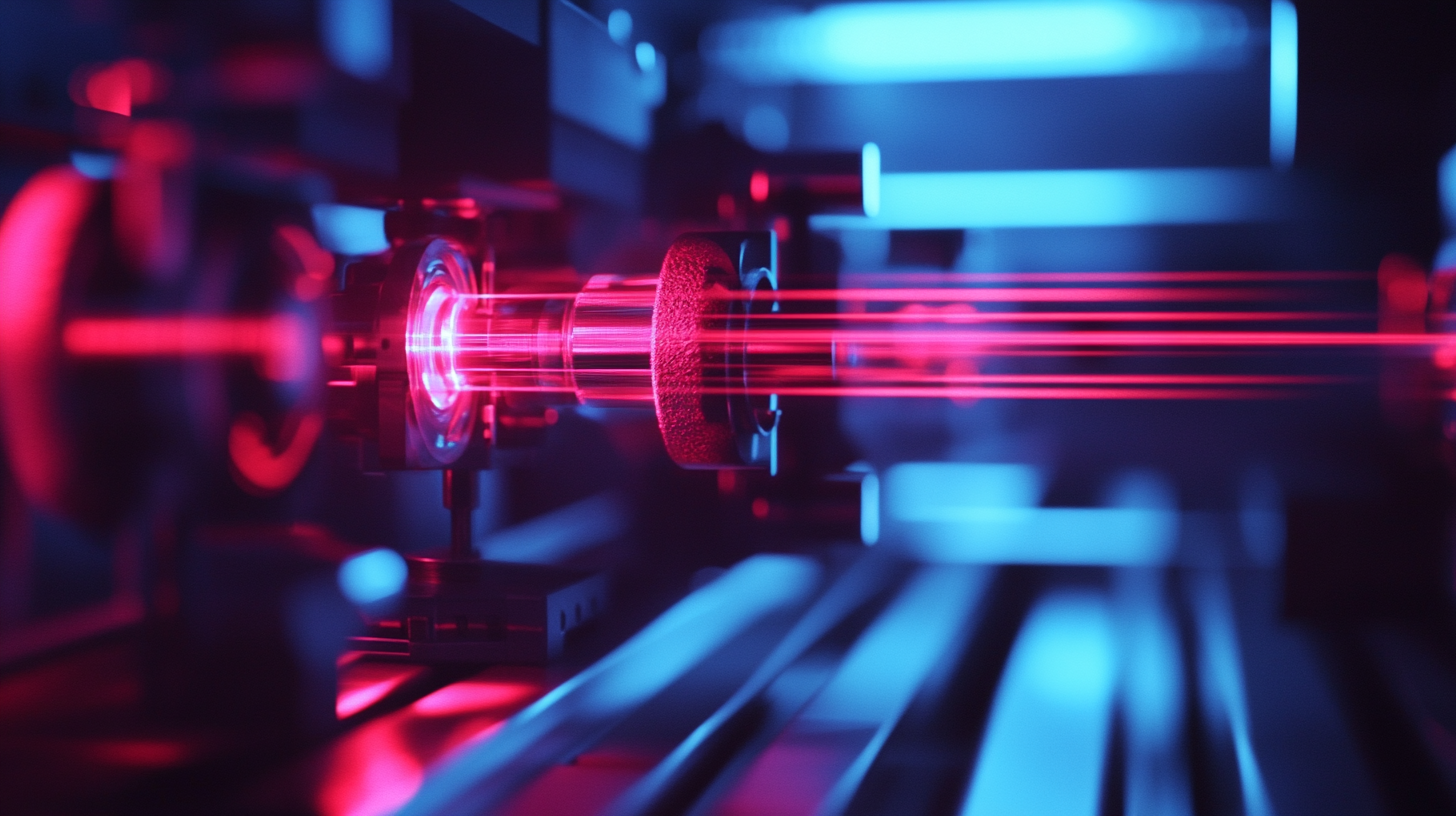© 2025 Messer Cutting Systems, Inc.
The global demand for laser machines has witnessed a remarkable surge in recent years, driven by technological advancements and the increasing adoption of automation across various industries. According to a report by MarketsandMarkets, the laser processing market is projected to grow from USD 3.4 billion in 2020 to USD 5.9 billion by 2025, at a CAGR of 11.6%. This remarkable growth is not only reflective of the rising demand for precision manufacturing but also highlights the versatility of laser machines in applications ranging from cutting and welding to marking and engraving. As industries strive for greater efficiency and enhanced quality, laser technology stands out as a pivotal solution.
In 2023, the factors propelling the demand for laser machines are more pronounced, as businesses aim to streamline production processes while adhering to sustainability targets. The ongoing shift towards Industry 4.0 and smart manufacturing has made laser machines indispensable tools in achieving operational excellence. Furthermore, as reported by Fortune Business Insights, the global laser technology market is expected to reach USD 19.43 billion by 2026, showcasing a myriad of applications across sectors such as automotive, aerospace, and healthcare. This blog will delve into the five essential factors fueling this growth, exploring how laser machines are redefining manufacturing and service modalities in a rapidly evolving global landscape.

The global laser machine market is poised for significant growth in 2023, driven by a convergence of technological advancements and increasing demand across various industries. One of the key trends fueling this demand is the rise of automation and precision manufacturing processes. As industries seek to enhance efficiency and reduce waste, laser machines provide unparalleled accuracy and versatility, catering to a wide range of applications from cutting to engraving. Moreover, the expanding adoption of laser systems in fields such as medical devices and aerospace is reshaping market dynamics. Laser technology enables intricate designs and high-quality finishes, crucial for sectors that prioritize performance and compliance with stringent regulations. As market players focus on innovation, the introduction of more compact and energy-efficient laser machines is likely to continue, making these technologies accessible to smaller enterprises and emerging markets. Additionally, sustainability is becoming an increasingly important factor in purchasing decisions. Companies are actively seeking eco-friendly solutions, and laser machines, known for their reduced material waste and lower energy consumption, align well with these goals. This shift towards greener manufacturing processes not only meets regulatory standards but also appeals to environmentally conscious consumers, thus driving further demand in the laser machine landscape.

The landscape of laser technology is evolving rapidly in 2023, propelled by significant advancements that enhance both versatility and efficiency. One of the most striking developments is the emergence of smart laser systems capable of monitoring greenhouse gases with unprecedented speed and sensitivity. This leap in capability is not only beneficial for environmental monitoring but also showcases the broader applicability of laser machines across various sectors.
These advanced laser systems utilize cutting-edge sensors and real-time data processing algorithms to detect and analyze gases more accurately than traditional methods. As industries face mounting pressure to comply with environmental regulations and reduce their carbon footprints, the demand for efficient, sophisticated monitoring solutions has surged. This trend highlights how technological innovations in laser machinery deliver solutions that meet both industrial needs and sustainability goals.
Moreover, the versatility of these machines is enhanced through their integration with artificial intelligence and machine learning, enabling users to customize applications with ease. The ability to adapt to different environmental conditions and requirements makes laser machines indispensable tools across sectors, from manufacturing to environmental science. As these technologies continue to evolve, the global demand for laser machines is anticipated to rise, driven by the necessity for smarter, more adaptive solutions in an increasingly eco-conscious world.

The rapid advancement of industrial automation technologies has significantly reshaped the landscape of manufacturing. In 2023, one of the most impactful trends observed is the increasing demand for laser cutting and engraving solutions. These high-precision machines are essential for meeting the needs of modern manufacturing processes, where efficiency and precision are paramount. With industries striving for greater productivity, laser machines have emerged as a vital component that enhances automation capabilities.
3D laser cutting machines, in particular, have gained remarkable traction due to their versatility and ability to execute complex designs with minimal waste. As industries integrate smart manufacturing processes, the precision of laser technology proves invaluable. This shift not only improves production speed but also reduces labor costs, as automated laser systems take over tasks traditionally performed by human workers. As a result, companies are more inclined to invest in laser cutting and engraving solutions to remain competitive and meet the demands of the market.
Furthermore, the push for sustainability in manufacturing has also fueled the demand for laser machines. The efficiency of laser cutting reduces energy consumption and material waste, aligning with global efforts to promote environmentally friendly practices. This factor, combined with the ability to automate processes, positions laser technology as an essential tool in the evolving landscape of industrial automation, making it a key driver of growth in the sector in 2023 and beyond.

The adoption of laser machines in emerging markets is rapidly increasing, driven by several key factors that are reshaping industries across the globe. As countries such as India, Brazil, and Vietnam continue to industrialize, the demand for precision, efficiency, and innovation in manufacturing processes has surged. Laser technology offers a unique blend of speed and accuracy, making it ideal for a variety of applications, including cutting, welding, and engraving. This technological advancement enables businesses to enhance their productivity and reduce operational costs, fostering greater economic growth in these regions.
However, the journey toward widespread adoption is not without challenges. Emerging markets often face infrastructural limitations, with inconsistent access to power and technology support posing significant hurdles. Additionally, the high initial investment required for laser machinery can deter potential adopters. Despite these obstacles, governments and private sectors are increasingly recognizing the long-term benefits of integrating advanced technologies. Initiatives aimed at improving infrastructure and providing financial assistance are gradually helping to bridge the gap, enabling more companies to embrace the advantages of laser machines and stay competitive in a rapidly evolving marketplace.
As manufacturers in emerging markets navigate these challenges, they are not only transforming their own businesses but also contributing to a global shift towards smarter, more efficient production methods. The future looks bright for laser technology, with its potential to empower industries and drive economic development in regions previously limited by traditional manufacturing processes.
In 2023, the manufacturing landscape is increasingly shaped by the dual imperatives of sustainability and cost-efficiency, with laser technology at the forefront of this transformation. According to a recent report by Allied Market Research, the global laser cutting machine market is projected to reach approximately $9.2 billion by 2027, reflecting a compound annual growth rate (CAGR) of 6.7%. This growth is fueled by manufacturers seeking to reduce their carbon footprint while maximizing productivity, demonstrating a clear link between advanced laser applications and environmental responsibility.
Laser technology offers significant advantages in terms of material efficiency and waste reduction. For instance, laser cutting produces less scrap compared to traditional methods, which can save businesses up to 30% in material costs, as highlighted in a study by the International Journal of Advanced Manufacturing Technology. Furthermore, laser machines operate with lower energy consumption due to their high precision and speed, leading to substantial savings on operational costs, particularly in energy-intensive sectors such as automotive and aerospace manufacturing.
The drive for sustainability is not merely a trend; it is a necessity. The World Economic Forum states that industries must adopt greener practices to address climate change effectively. Laser machines are pivotal in this transformation, enabling companies to implement cleaner production processes that comply with stringent environmental regulations. By integrating laser technology into their operations, manufacturers are not only enhancing efficiency but are also establishing themselves as leaders in sustainable practices—paving the way for a more environmentally conscious future in manufacturing.
© 2025 Messer Cutting Systems, Inc.